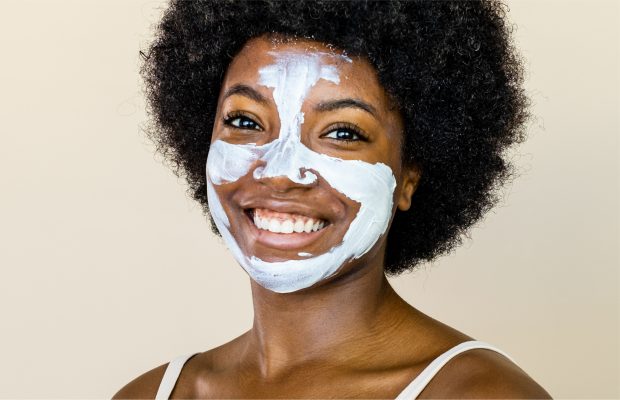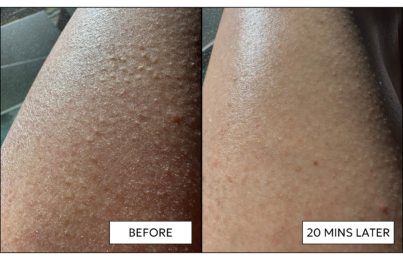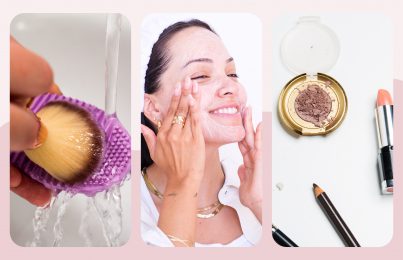Updated 11/19/21. When I was going through esthetics school in the late ’80s, I was taught that everyone should get a facial once a month. The reasoning for this was that a month is roughly the amount of time it takes for our skin cells to move through a full life cycle, making their way from the dermis to the surface where they’re naturally sloughed off. However, recent research indicates that it likely takes 40-56 days for the skin on the face to turn over.
- What Are the Basic Components of a Professional Facial?
- Do I Really Need a Facial Every Month?
- How Often Should I Get a Facial Based on My Skin Concerns?
- 5 Surprising Benefits of a Professional Facial
- Bottom Line
So, how often should you really get a facial? Does it depend on your specific skin concerns? The answer is a little more complicated than just “yes” or “no.” Keep scrolling to learn everything you need to know.
What Are the Basic Components of a Professional Facial?
First things first. Let’s talk about what the esthetician is doing (and what you can expect) during a professional facial.
- Skin Analysis: The esthetician will begin by chatting with you and asking you questions so they can determine the best treatment plan for your skin.
- Deep Cleanse: This provides a fresh palette for all of the treatments and products to follow.
- Exfoliation: This can take many different forms, but a gentle exfoliating acid or enzyme peel, ultrasonic exfoliation, microdermabrasion, or bio brasion are the most common.
- Steam: This increases circulation and makes it easier to perform manual extractions.
- Massage: Estheticians are trained in facial massage to encourage brighter, glowing skin by increasing circulation. This is beneficial if you struggle with a dull-looking complexion. This step might be omitted for those who are dealing with severe breakouts, since it may be too much stimulation (skipping this would also allow the esthetician to spend more time on extractions).
- Manual extractions: The esthetician performs extractions to clear out blackheads and clogged pores. (Unlike most estheticians, I always perform extractions after the massage.)
- Mask: Like exfoliation, there are many different mask options. Your esthetician will be able to choose the best one for you after assessing your skin’s specific needs.
These are the basic steps of a facial, but of course, there are many services that can be added to enhance results. Devices, such as microcurrent, LED light therapy, ultrasound, and high frequency are just a few examples.
Do I Really Need a Facial Every Month?
The short answer is no, not necessarily.
While it is true that the full life cycle of cell growth is about 30 days for the average person, this thought process was established way back in the day when at-home exfoliation wasn’t really an option. If exfoliation was occurring at home, it was usually a gommage or facial scrub used only once every few weeks. While I believe facial scrubs can be very effective, they don’t provide the level of exfoliation required to actually stimulate cellular turnover. Today, though, at-home skincare has come a long way, and exfoliating products are a lot more sophisticated. Many people use exfoliating products regularly, whether it’s facial scrubs, exfoliating acids, and/or enzymes. (Check out the complete guide to exfoliation.)
At the very least, I recommend getting two facials a year (or four, if you can). The benefit of this is that you can check in seasonally with your esthetician, who can help you tweak your at-home routine based on whatever is happening in your skin. A good esthetician should be able to curate your home care routine around how often you can or want to come in for a facial and still help you achieve your skincare goals.
With that being said, there are certain situations in which getting more frequent facials can be beneficial.
How Often Should I Get a Facial Based on My Skin Concerns?
If Your Main Skin Concern Is Blemishes and/or Clogged Pores…
If you deal with blemishes and clogged pores, facials can make a big difference. That’s because clogged pores typically require professional extractions so they don’t remain in the skin and turn into full-blown blemishes. Of course, how often you should get a facial will depend on the number and severity of your clogged pores. As a general rule of thumb, though, it’s helpful to get a facial every 2-3 weeks until the skin clears. You can spread the facials out again to every 4-6 weeks after that. It might sound like a lot, but consistency is key when it comes to clearing blemishes and clogged pores.
Just be sure to go to someone who knows how to treat blemishes and clogged pores. Otherwise, they could overstimulate your skin, which could lead to increased inflammation and even more blemishes.
What to Expect from This Type of Facial…
Extractions and the use of a high-frequency device are key. The former removes clogged pores and the latter targets active blemishes. The esthetician may also apply a soothing mask to calm inflammation. Typically, with blemishes, you don’t want to do a lot of physical exfoliation as it can cause further inflammation. Chemical exfoliation is usually the name of the game. Chemical exfoliants can dissolve dead skin cells so they don’t end up clogging pores. Some chemical exfoliants I love for blemish-prone skin are salicylic and glycolic acids.
If blemishes and clogged pores are your main concern, you could be a Skin Type 1, 2, 3, or 4. Take the Skin Type Quiz to find out.
If Your Main Concern Is Pigmentation…
Just like with blemishes and clogged pores, consistency is key for pigmentation. I recommend getting five brightening facials every 2-3 weeks before spreading them back out to 4-6 weeks. You want to stay ahead of it to keep pigment cells calm so they don’t produce more pigment. You also want to lift existing pigment. Melasma is the hardest type of pigmentation to address, but it’s not impossible. It can get lighter over time but takes a lot of patience. It might even potentially take some in-office treatments such as IPL, laser, or radiofrequency in conjunction with facials.
What to Expect from This Type of Facial…
Expect the esthetician to use lots of antioxidant ingredients like vitamin C or resveratrol, plus acids such as tartaric, azelaic, and kojic acids. As for professional treatments, red LED light can help even out skin tone. Otherwise, you can consult a dermatologist to discuss the other in-office treatments listed above.
If pigmentation is your main concern, you could be a Skin Type 8. Take the Skin Type Quiz to find out.
If Your Main Concern Is Dryness…
if you struggle with dryness, dehydration, or a damaged barrier (Skin Types 7, 8, and 9), a professional facial can help repair your skin’s moisture barrier to keep skin looking plump and healthy. A good rule of thumb with this skin concern is to get a facial every 4-6 weeks.
What to Expect from This Type of Facial…
After cleansing and toning the skin, the esthetician may start by applying a gentle exfoliant (typically lactic acid or enzymes) to remove surface dryness. (Berry enzymes as well as pineapple and papaya enzymes, like those found in the Dual Softening Peel, are great for dry skin types.) After facial massage and extractions, they may apply a hydrating serum and a moisturizing mask that’s fit for your skin type. Typically, with dry skin, you want to give it ingredients like lipids and ceramides, which support the skin’s natural moisture barrier. Professional treatments that can be used during this type of facial can include oxygen and red LED light therapy.
If dryness is your main concern, you could be a Skin Type 7, 8, or 9. Take the Skin Type Quiz to find out.
If Your Main Concern Is Signs of Aging…
To address and prevent signs of aging, I suggest going in for a facial every 4-6 weeks. The esthetician can analyze your skin to discover which ingredients and treatments your skin could benefit from most.
What to Expect from This Type of Facial…
A facial that’s tailored to target signs of aging will follow the traditional format. The only stand-out addition would be the use of serums or masks that contain peptides. These are molecules that can help build and protect collagen and elastin. Collagen and elastin are two major components of the skin that keep it looking firm and tight.
After the other basic steps of the facial have been completed, the esthetician may utilize a microcurrent device on your skin. This is a device that uses a low-level electrical current to stimulate the currents that naturally run through your body. The waves it gives off are able to penetrate through the skin and into the facial muscles to lift, tone, and firm them.
If signs of aging are your main concern, you could be a Skin Type 5,6,7,8, or 9. Take the Skin Type Quiz to find out.
5 Surprising Benefits of a Professional Facial
While a comprehensive at-home skincare routine may be plenty for some, professional facials can offer many extra benefits. Depending on your skin type and needs, you may need some of these benefits more than others.
- Expert Skin Analysis: Even if you’re happy with the current state of your skin, an esthetician can help you understand your unique skin type and tell you how to best care for it for maximum results.
- Professional-Strength Exfoliation: While many at-home exfoliating products are great, you may benefit from something stronger if you’re looking to smooth your skin texture or lighten discoloration from the sun and breakouts.
- A Scope for Skin Cancer: An experienced esthetician can recognize changes in the skin that you might be overlooking and encourage you to get regular skin cancer screenings.
- Professional Guidance: Using the right skincare products is super important, and sometimes it helps to take the guesswork out of it. An esthetician can offer guidance when it comes to creating an effective home care routine. This may include seasonal, environmental, hormonal, and age-related changes occurring with the skin.
- Stress Release: Never underestimate the power of taking time for yourself!
Bottom Line
Even though professional facials aren’t a requirement for beautiful, healthy skin, they do offer certain benefits that an at-home routine can’t. If you consistently struggle with breakouts, clogged pores, and discoloration, consider adding regular (or semi-regular) facials to your skincare strategy. Getting on top of these conditions requires consistent care, and expert guidance can be invaluable. In these instances, I consider facials a truly important asset.
One final thought. Facials these days are far more personalized and results-oriented than ever before. If your goal is to care for your skin in the best way possible (even if you don’t have any of the three conditions listed above), I suggest making facials a regular part of your skincare maintenance if possible. Simply put, putting your face in the hands of a skincare professional can do wonders, along with using a good at-home routine for your unique skin type.
Next, thinking about getting Botox or fillers? Read this first.
Celebrity Esthetician & Skincare Expert
As an esthetician trained in cosmetic chemistry, Renée Rouleau has spent 35 years researching skin, educating her audience, and building an award-winning line of products. Her hands-on experience as an esthetician and trusted skin care expert has created a real-world solution — products that are formulated for nine different types of skin so your face will get exactly what it needs to look and feel its best. Trusted by celebrities, editors, bloggers, and skincare obsessives around the globe, her vast real-world knowledge and constant research are why Marie Claire calls her “the most passionate skin practitioner we know.”



